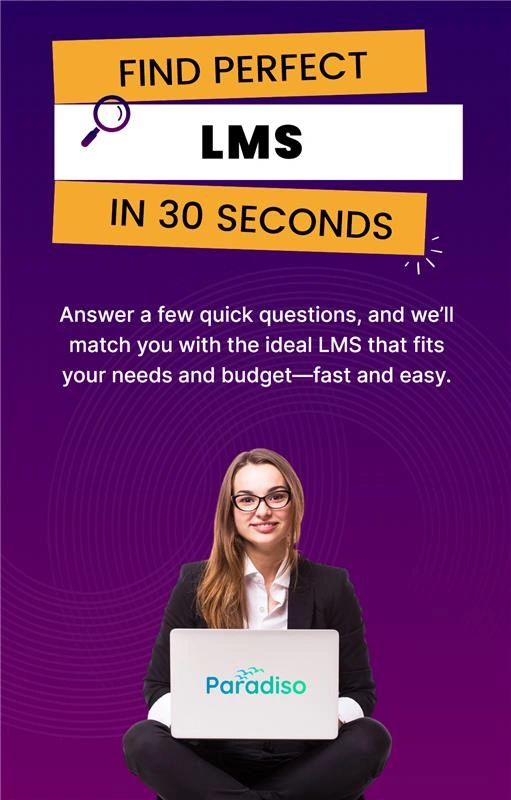The Impact of Shrinking Training Budgets in 2025: Challenges and Opportunities
As organizations navigate the complexities of 2025, many face mounting economic pressures that directly influence their training budgets. Global market uncertainties, inflation, and shifting customer demands have prompted companies to reassess and often cut expenses across various departments, notably in employee development. A 2024 report by the World Economic Forum highlights that nearly 60% of organizations worldwide plan to reduce their training and learning budgets, spotlighting the need for adaptable solutions.
These financial constraints bring several challenges. Limited funds restrict access to high-quality learning resources, which can lead to decreased employee motivation and increased turnover. Additionally, without ongoing training, companies risk skill gaps that hinder innovation and operational efficiency. Employees may struggle to adapt to new technologies or processes, risking productivity dips and operational disruptions.
Start Scaling Your L&D Today with Free Tools
Unlock the Potential of Free Tools to Revolutionize Your Learning Strategy!
Despite these hurdles, constraints often catalyze innovation. Organizations are exploring opportunities like leveraging internal expertise through peer-to-peer learning, mentorship programs, and knowledge-sharing sessions. Cost-effective digital solutions, such as free or low-cost online courses, webinars, and open-access resources, are gaining prominence. For example, a 2023 survey shows over 70% of firms successfully utilize platforms like Coursera, edX, and industry webinars to support employee growth.
Moreover, focusing on personalized learning paths, microlearning modules, and data-driven strategies enhances training efficiency and impact—even with limited budgets. These approaches ensure training remains relevant, engaging, and aligned with organizational priorities. Embracing such innovative strategies enables companies to retain a competitive edge without significant financial investment. Solutions like Paradiso LMS have emerged as versatile platforms that support these resourceful training initiatives, helping organizations sustain talent development amidst economic challenges.
Reimagining Learning Strategies: Cost-Effective Solutions for Staying Ahead
In today’s rapidly evolving digital environment, organizations need effective training strategies that deliver maximum value without hefty costs. By harnessing modern technologies and innovative tools, businesses can create scalable, engaging, and budget-friendly learning programs. These strategies foster skills development while promoting a culture of continuous improvement across all levels.
One significant advantage of technology-driven learning is its ability to reduce traditional expenses—such as travel, venue rentals, and printed materials. E-learning modules and virtual classrooms enable organizations to deliver consistent, high-quality training across multiple locations at a fraction of the cost. Additionally, open-source platforms and affordable subscription services provide extensive educational content without straining budgets.
Modern digital tools also support personalized learning experiences, allowing users to progress at their own pace and select relevant content. Gamification elements like badges and leaderboards boost motivation without requiring large investments. Mobile-friendly applications further increase accessibility, enabling learners to engage conveniently anytime and anywhere. Social features, such as discussion forums and peer collaboration, nurture knowledge sharing and community building economically.
Emphasizing data analytics allows organizations to track learner progress and evaluate program effectiveness continuously. This insight helps refine training efforts for better ROI. Collectively, these cost-effective learning strategies ensure organizations stay competitive by developing talent efficiently, adaptable to continuous change. By integrating these digital approaches, companies can foster a resilient learning culture that thrives despite financial limitations.
Why a Free LMS Is a Game-Changer for Budget-Conscious Organizations
Implementing a Learning Management System (LMS) is essential for structured, scalable training programs. For small and medium-sized businesses (SMBs), budget constraints often make expensive LMS licenses a barrier. Luckily, free LMS solutions provide an accessible alternative, enabling organizations to deliver robust training without high costs.
Cost efficiency is the primary advantage. Free LMS platforms like Moodle, TalentLMS, or Google Classroom eliminate licensing fees, allowing SMBs to allocate resources elsewhere. Industry reports indicate these platforms can reduce training costs by up to 70%, freeing funds for content development or expanding workforce capabilities.
These solutions are quick to deploy and typically user-friendly, minimizing IT requirements and speeding up implementation. Customization options, such as branding, course structuring, and assessments, allow organizations to tailor the platform to their needs. Many are cloud-based, ensuring accessibility across devices and locations, which is vital for remote or distributed teams.
However, free LMS options do have limitations—sometimes lacking advanced analytics, integrations, or extensive support. Storage caps and user limits may also restrict scalability as the organization grows. Nonetheless, for SMBs focusing on core features, free LMS platforms can serve as an effective foundation. Key functionalities to look for include course creation, assessment tools, progress tracking, mobile compatibility, and communication features.
Overall, choosing a free LMS empowers organizations to establish or enhance e-learning initiatives cost-effectively. It allows them to build a capable training environment that aligns with their budget constraints while supporting long-term growth and employee development.
🚀 Ready to See Paradiso LMS in Action?
Let’s show you how Paradiso LMS can work for you.
Paradiso LMS: A Versatile, Cost-Effective Solution to Power Your Learning Programs
In an era where adaptive, budget-friendly learning solutions are in high demand, Paradiso LMS stands out as a comprehensive platform tailored to meet diverse organizational needs. Whether in corporate training, higher education, or non-profit sectors, Paradiso LMS offers flexibility, scalability, and rich features, all designed to optimize learning experiences without exceeding budgets.
Its robust feature set includes personalized learning paths, real-time analytics, mobile accessibility, and social learning tools that promote engagement and collaboration. The user-friendly interface minimizes onboarding time and training costs, making it suitable for organizations seeking quick deployment.
One of Paradiso LMS’s strengths is its seamless integration capabilities. Its API-driven architecture allows smooth connection with existing systems like CRM platforms, HRIS solutions, video conferencing tools such as Zoom, and content management systems. This interoperability streamlines workflows, reduces the need for multiple separate tools, and cuts down management overhead and costs.
The platform’s modular design enables organizations to start with essential features and expand functionalities over time. Cost-effective licensing plans and ongoing support options further enhance its affordability. Many clients report significant savings—such as a 30% reduction in training expenditures—while achieving increased learner engagement and completion rates.
Overall, Paradiso LMS offers a strategic, scalable, and economical solution that empowers organizations to deliver effective training programs even during budget constraints. Its versatility and mature ecosystem make it a trusted choice for organizations aiming for growth and competence development without financial strain.
Actionable Steps to Implement a Free LMS and Sustain Your Learning Initiatives
Implementing a free LMS effectively requires careful planning, strategic deployment, and ongoing management. By following these actionable steps, organizations can maximize their investment, enhance learning outcomes, and ensure sustainable training programs without extra costs.
1. Selecting the Right Free LMS
Identify your training objectives, target audience, and content formats. Evaluate popular platforms like Moodle, Canvas, or Google Classroom based on required features, scalability, user experience, and support. Ensure compatibility with your organization’s technical environment and accessibility standards.
2. Planning and Deployment
Develop a detailed rollout plan covering data migration, user onboarding, and content organization. Customize branding elements to create a cohesive learning environment. Pilot the platform with a small group to gather feedback and resolve issues before full deployment.
3. Content Management and Engagement
Organize courses logically, incorporating diverse materials such as videos, quizzes, and PDFs. Use clear learning paths and assessment tools to track progress. Encourage active participation through discussion forums and peer collaboration.
4. Monitoring and Continuous Improvement
Regularly analyze engagement metrics and completion rates. Use insights to improve content and address learner needs. Keep materials current with industry developments and organizational updates.
5. Ensuring Data Security and Support
Implement security best practices, such as regular backups and role-based access. Stay informed through community forums, documentation, and tutorials, especially since support for free platforms may be limited.
6. Promotion and Growth
Promote your LMS internally through newsletters, meetings, and incentives. Gather feedback continuously to refine and expand your training programs. Leverage additional free tools, like webinars and open resources, to complement your LMS and diversify learning experiences.
By following these steps, your organization can harness the power of a free LMS to deliver impactful training, foster continuous learning, and adapt to evolving needs—all while maintaining cost efficiency.
Cut Costs, Not Learning – Empower Your Team with a Free LMS.
Keep Training Alive in 2025—Start Using Our Free LMS Today!
Actionable Strategies to Keep Learning Alive Despite Budget Constraints
Maintaining a vibrant learning culture with limited resources requires strategic planning. Prioritize core training objectives, utilize existing content, and promote self-paced learning. Leverage community features like discussion forums and peer collaboration to enhance engagement. Regularly monitor progress and gather feedback to refine programs, ensuring sustained impact without additional expenditure.
Conclusion: Future-Proof Your Learning Programs with Smart LMS Choices
As organizations navigate economic uncertainties in 2025, choosing the right LMS becomes vital. Solutions like Paradiso LMS offer a balance of affordability, flexibility, and powerful features, helping companies sustain impactful learning initiatives. Proactively investing in a scalable and adaptable LMS ensures long-term growth, improved employee performance, and a competitive edge in a rapidly changing digital landscape.

















